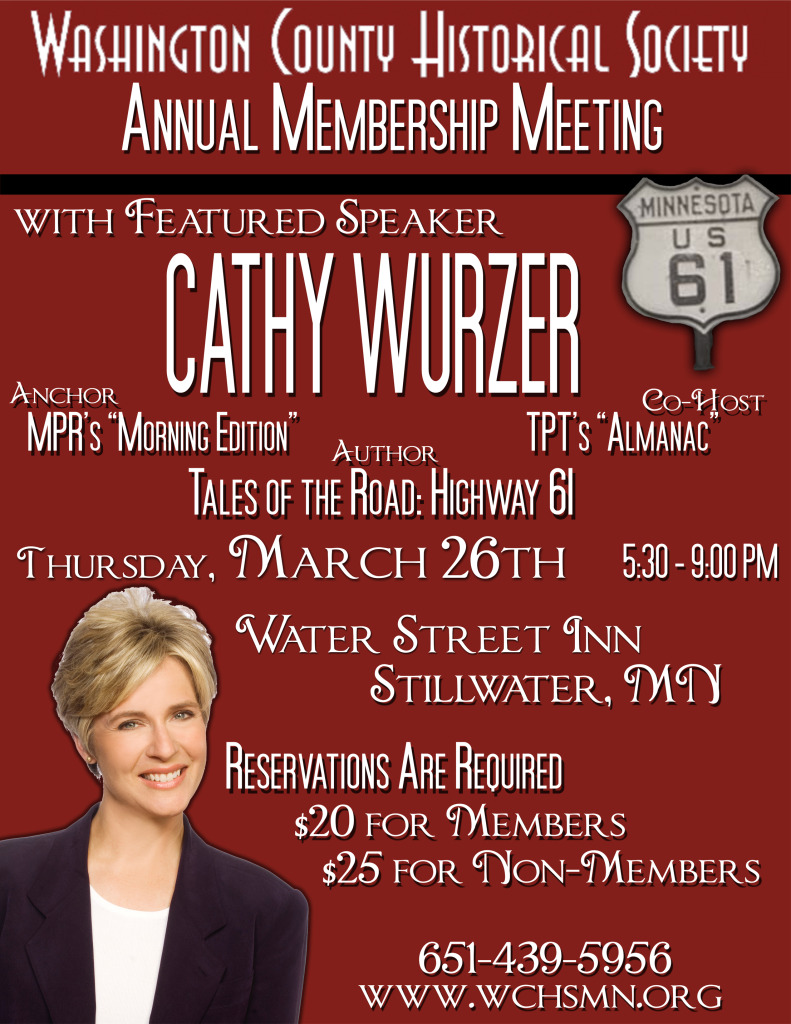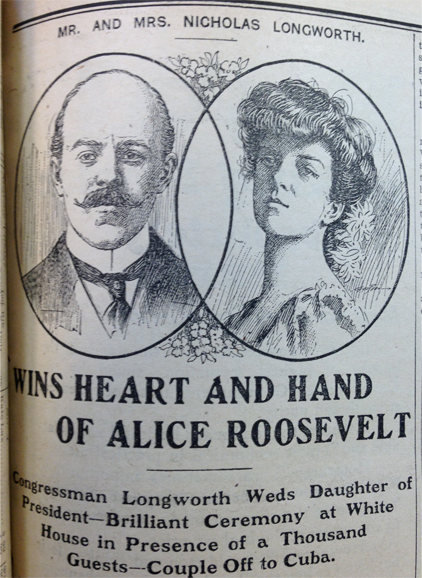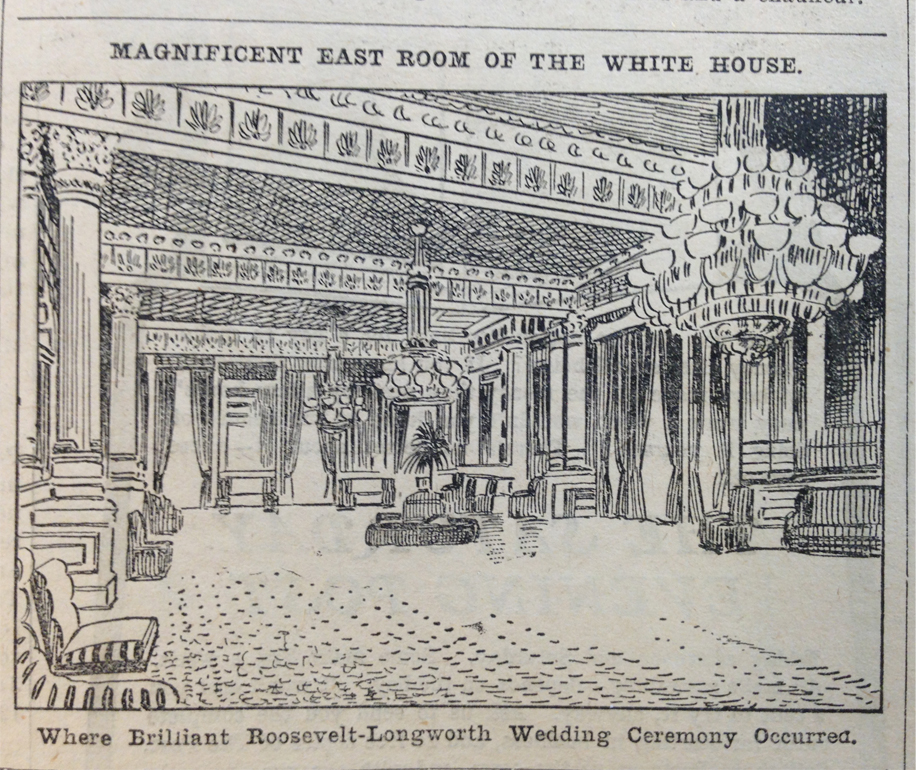Receive the Historical Messenger in your inbox once every two weeks by signing up for our mailing list!
|
This issue: Contents
Tuesday, February 24th, 2015
Editor’s NoteHappy Tuesday everyone! Thanks for joining us for the latest Historical Messenger! You read it last issue, you’ll read it next issue – now through April 15th, WCHS is accepting applications for both our 2015 scholarships and internships. For the history student or anyone who wants to experience working in the history field, these are invaluable opportunities we are able to provide thanks to the generosity of the DeLonais Foundation. Visit our website for more information on how to apply. Despite what your thermometer is telling you – Spring really is right around the corner! With the changing of the seasons, both the Warden’s House and Hay Lake Museums are eagerly preparing to begin the 2015 touring season – which means that WCHS needs help! If you’re interested in learning about volunteer opportunities – head down to our first News Story for some information on how to get involved. You still have time to get an early reservation for the Annual Membership Meeting! Check out the second News Story to see how. Last issue I challenged you readers to correctly identify one of the artifacts in the collection. In the Photo of the Week section, you’ll read a few guesses from your fellow WCHS supporters before I relay the actual answer. And since so many of you ventured a guess last time – I thought it’d be fun to play another round of “What Is This Thing?!” with a piece of our collection! Presidents’ Day was celebrated across the nation last week, but this week in 1906, the whole country was busy celebrating the President’s daughter! See our Old News for a glimpse into the White House’s most spectacular wedding ceremony – and how it captured average folks’ imaginations in far-flung Minnesota. And if Minnesota was “far-flung” in 1906, it may as well have been another planet in the late 1840s and early 1850s. The early white settlers of this region not only had to contend with harsh environmental challenges, but for the first time in these men and women’s lives, they were suddenly in a region where their race was in the minority. Their encounters with the Dakota and Objibwe were so memorable and, at times terrifying, that in 1914 when Minnesota representatives of the Daughters of the American Revolution began interviewing these then elderly pioneers – nearly every one had vivid memories of their first meetings with Native Americans. Want to learn more about the history of Washington County? “Like” WCHS on Facebook and follow us on Twitter! Sean Pallas Historical Messenger editor and Warden’s House Site Manager WCHS News New Volunteer Orientation MeetingAnyone who is passionate about preserving and sharing our local history is invited to attend an informal informational meeting at the Warden’s House on Sunday, March 15th at 1:00 PM to learn about volunteer opportunities with the Washington County Historical Society. WCHS relies on our volunteers’ help with everything from guiding visitors through our museums, to collecting data for our tens of thousands of artifacts, to even serving tea at our Annual Christmas Event! Wherever your interest in history lies, we can tailor a volunteer experience to suit you! For more information, contact Sean Pallas at spallas.wchs@gmail.com or call 651-439-5956. WCHS NewsAnnual Membership Meeting
Online tickets: WCHS Members / Non-Members Photo of the Week
What Is This Thing?! (Round 2) Last Photo of the Week, I showed you folks a picture of a rusty little sphere and then turned it over to you. It definitely isn’t a donut hole as one reader jokingly offered, nor is it a “steely” – a metal shooter used in marble games. The most popular answer by far was a musket ball. However, as another reader correctly pointed out, it’s a bit too big to fit inside a musket barrel. However, this answer is at least on the right track. The photograph actually features one of the many pieces of grapeshot in the WCHS collection. Prior to the Civil War, grapeshot consisted of slightly larger balls wrapped in a canvas sack that would be loaded into a cannon instead of the normal, single, large cannonball. When fired at massed infantry the balls would spread out and act as a devestating long-rang shotgun. By the 1860s, artillery designers had shrunk the diameter of grapeshot to the size in the example and began housing the balls in cylindrical metal shells, known as canister shot, to increase their range and accuracy. Thank you everyone who participated in our little game! After taking a good look at this issue’s mystery item you may be able to guess this item’s original use – but, I wonder how many of you will know it’s actual name! Can you identify the WCHS artifact photographed above? If you’d care to venture an answer, you can send an email to me at spallas.wchs@gmail.com, tweet @WCHS2, or post your guess on our Facebook page. Good luck! Old NewsIt’s A Nice Day For A White House WeddingWhile the United States doesn’t have a Royal Family, at times its First Family receives a similar degree of attention. Alice Lee Roosevelt, daughter of popular President Theodore Roosevelt, was as common of a subject in fashion magzines as gossip columns. In an era where women were expected to be quietly passive – Ms. Roosevelt was anything but. She owned a pet snake, she smoked cigarettes in public and drove automobiles without a chaperone. In 1905, she even joined a delegation of American politicans on an Asian expedition that met with both the Chinese Empress and Japanese Emperor. On this good-will tour, she also became close to U.S. House Representative Nicholas Longworth III. The White House hosted a President’s daughter’s wedding for the third time in its history on February 17th, 1906. Alice Lee Roosevelt and Nicholas Longworth’s ceremony was attended by the most elite of the elites and drew thousands of curious onlookers into the streets. This event has been called the most elaborate and spectacular of all of the wedding ceremonies ever held at 1600 Pennsylvania Ave. And halfway across the continent, all the way in Stillwater, Minnesota- its newspaper dedicated two full pages to reporting the details. Below is an excerpt from these pages along with a few of the accompanying illustrations. Marriage Words Are Spoken – Stillwater Messenger – February 24, 1906 It was one of the most auspicious moments in the history of the White House. The guests seemed scarcely to breath, so intent were they to catch every syllable of the beautiful service. In low, yet reasonable tones, Bishop Satterlee began. At the conclusion of the responses from the bride and groom the venerable bishop inquired in a tone that filled the great room: “Who giveth this woman to be married to this man?” The president of the United States ascended the platform, and, taking his daughter’s right hand, placed it that of the bridegroom. Thus he gave the bride away to the ma of her choice, and by the ring, which an instant later the groom placed on the fourth finger of her left hand, she became Mrs. Nicholas Longworth… Leave the White House Mr. and Mrs. Nicholas Longworth made their escape from the White House after the wedding late in the afternoon, and in a quick automobile dash gained the country home of John R. McLean, “Friendship”, five miles from the city, where they rested, guarded from the curious by a cordon of mounted police.
Mr. and Mrs. Nicholas Longsworth started on their honeymoon from Alexandria, Va., at 11:18 a.m. Monday over the Southern railway. They will go to Tampa and from there take a boat for Havana, Cuba, which point they expect to reach Thursday morning. They will make the trip to Tampa in the private car Elysian, which was awaiting them in the yards of the Southern railway at Alexandria about a half a mile from the station. The bride and bridegroom made the trip from “Friendship”, John R. McLean’s country place, near Washington, to Alexandria in an open automobile, accompanied by Mrs. Longsworth’s maid and a chauffeur.
Featured ArticleCulture Shock on the Frontierby Brent Peterson, based on stories found in “Old Rail Fence Corners: Frontier Tales Told by Minnesota Pioneers” Mrs. Elizabeth Clifford came to the area because of the health of her father in 1850. They had some land six miles north of Stillwater and their closest neighbor was two and a half miles away, that being Mr. Morgan. Mrs. Clifford says that “one day as I glanced from the window, I saw a body of Indian warriors coming on the trail that led around the lake near us. As they came up, I saw they were in full war paint and feathers. The entered, examined everything, but took nothing. They asked for and ate bread and molasses, as they had seen the children doing when they came in. They all had guns and big bowie knives sticking in their belts. One particularly villainous looking one took out his knife and felt the edge, looking wickedly at us. One was exceptionally pleasant looking and I thought he would protect us if the rest got ugly. They finally went away. They were followed in the afternoon by a band of Chippewa braves who asked if the Sioux warriors had been that way that day. When told they had they rode hurriedly after them. They said the Sioux had taken some Chippewa scalps.” Another account of an encounter of the Native Americans was that of Mrs. Mahlon Black. She said that “a large party of Sioux camped right by us. They were dressed for what they were going after, a war dance, and were all painted and feathered. They were looking in the windows always. It used to make me sick to see their tracks where they had gone round and round the house. My husband was on the survey most of the time so I was there alone with my baby a great deal. One Sunday I was all alone when a lot of bucks come in – I was so frightened I took my baby’s little cradle and set I on the table. She had surly hair and they would finger it and talk in their lingo. When they left I took the baby and hailed the first team going by and made them come and stay with me. It was the Cormacks from St. Anthony. I made my husband move back to Stillwater the next day.” Mrs. Mary E. Dowling came to Marine as Mary Watson in 1855 to teach school. She noted that “A band of Indians was encamped at a lake near. One brave all dressed in his Sunday best used to come and sit in the kitchen day after day. He used to talk to the men but never said a word to us. He could speak good English. One day the chief came in and went for him. Said he had been away from his tepee for days and his squaws wanted him. Like lightning he crossed the room to where I was and said, ‘Me got Sioux squaw. Me got Winnebago squaw. Me want white squaw. You go?’ I was very earnest in declining.” |
Upcoming Events
More information: WCHS Events >>> Preserve the Past, Share in the Future!Become a member of the Washington County Historical Society! Membership is one way that you can help support the Washington County Historical Society. Your membership helps us collect, preserve, and disseminate the history of Washington County for county residents and visitors in the belief that a historical perspective enhances our understanding of community and sense of place. Benefits of membership:
The Washington County Historical Society has depended on membership ever since it was formed in 1934. Please show your support for the organization by becoming a member today. More: WCHS Membership >>> Washington County Historical SocietyMission StatementWashington County Historical Society collects, preserves, and disseminates the history of the county and state of Minnesota.
|
|||||||||




 Off For Cuba
Off For Cuba
 We are excited to announce that Cathy Wurzer will be the special Guest Speaker at the 2015 WCHS Annual Membership Meeting! The meeting will be held at the Water Street Inn, in Stillwater, MN on Thursday, March 26th. The event begins with a social hour at 5:30PM, dinner is served at 6:30, a meeting and election of WCHS Board Members will begin at 7:00pm, Cathy Wurzer’s presentation follows.
We are excited to announce that Cathy Wurzer will be the special Guest Speaker at the 2015 WCHS Annual Membership Meeting! The meeting will be held at the Water Street Inn, in Stillwater, MN on Thursday, March 26th. The event begins with a social hour at 5:30PM, dinner is served at 6:30, a meeting and election of WCHS Board Members will begin at 7:00pm, Cathy Wurzer’s presentation follows.